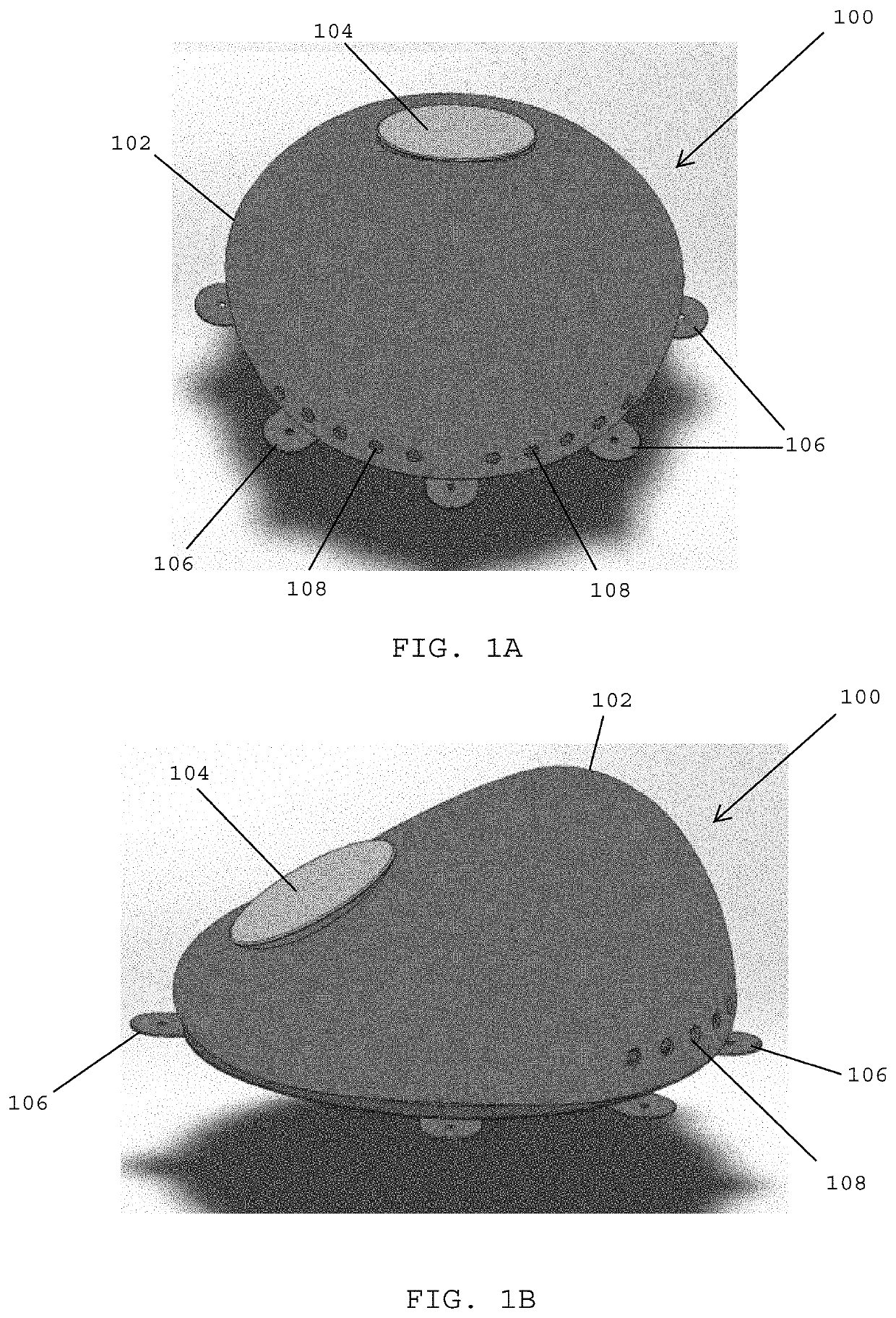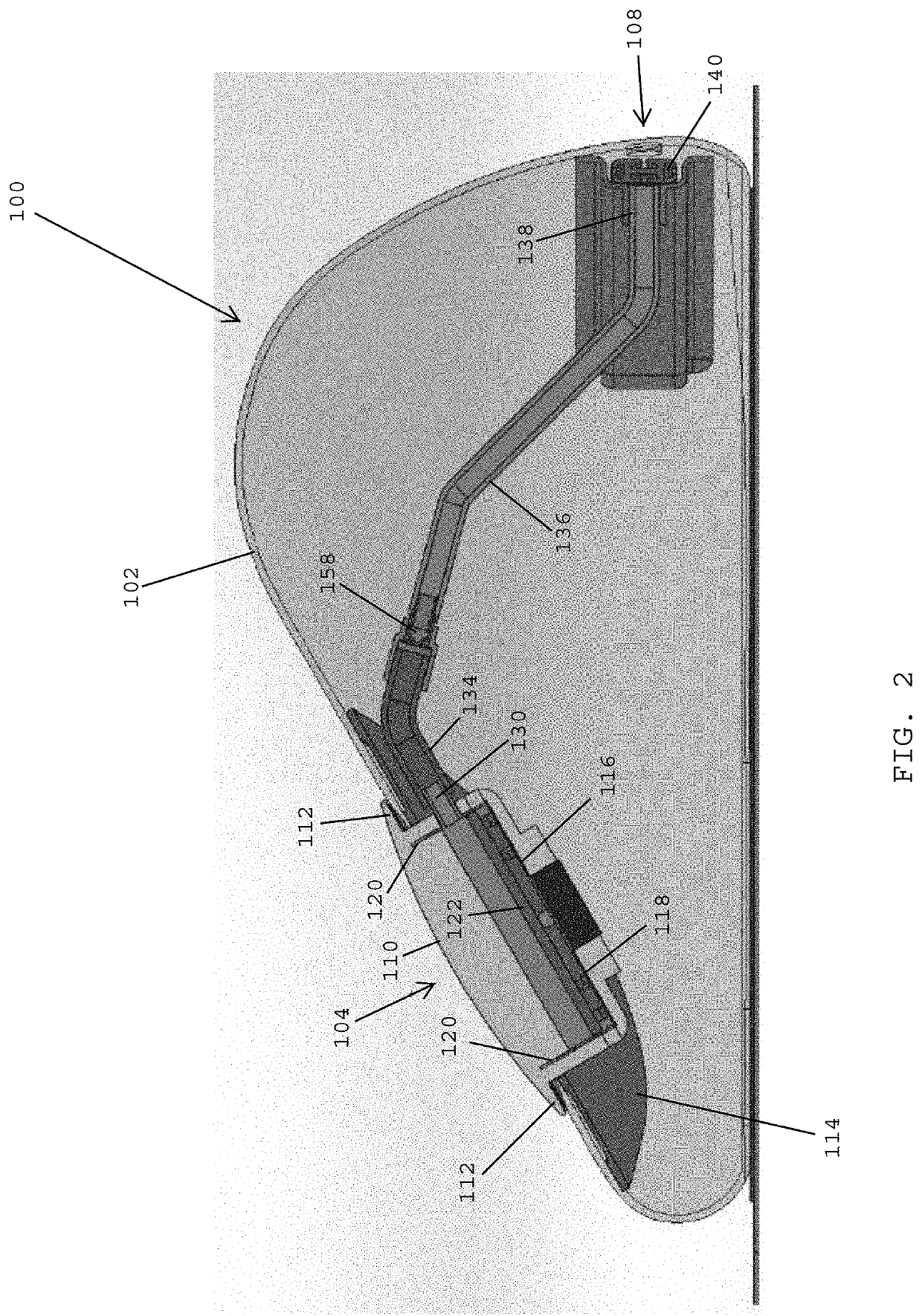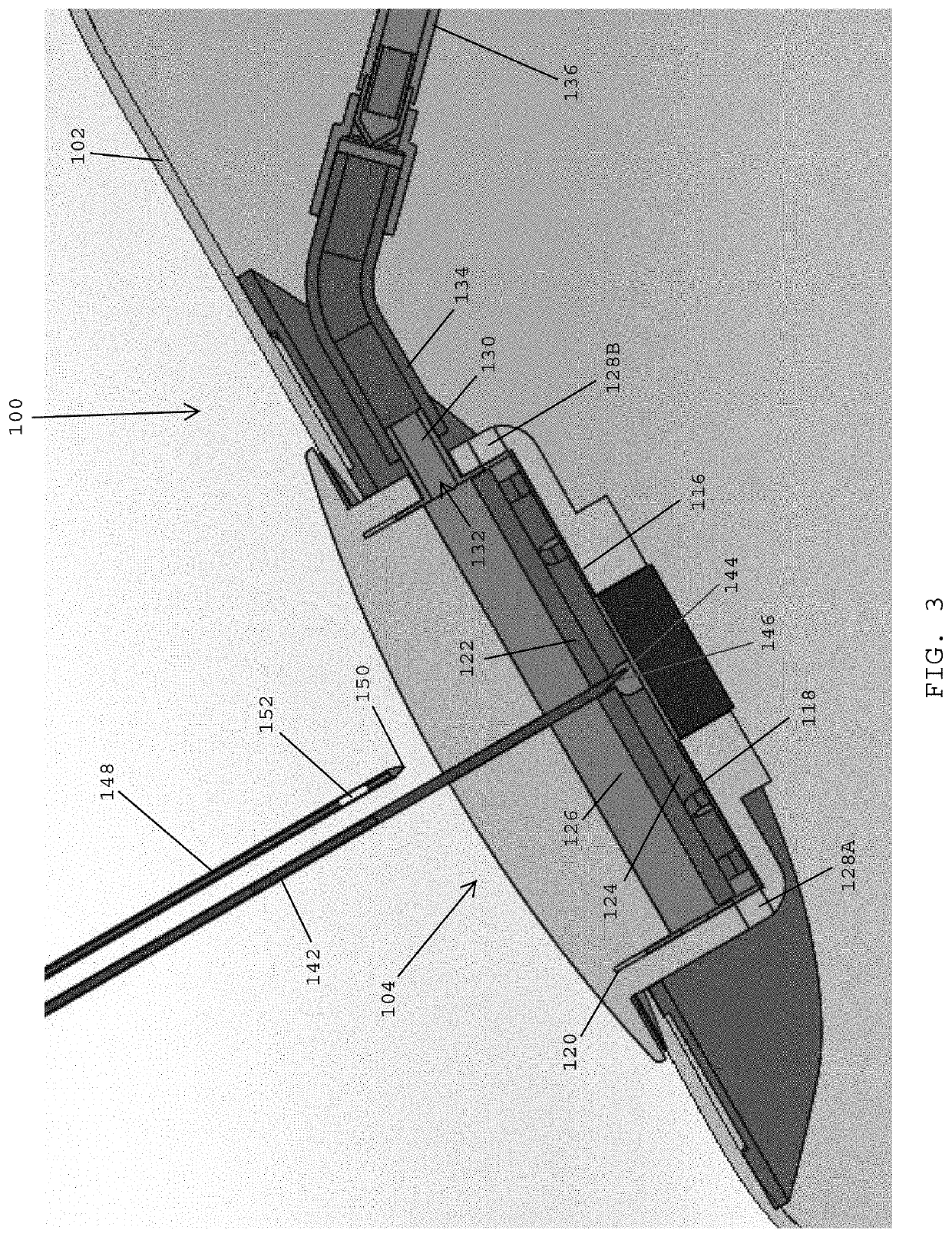Tissue expanders having integrated drainage and infusion assemblies
a tissue expander and infusion assembly technology, applied in the field of implantable devices, can solve the problems of traumatic emptying of reservoirs and no means of draining fluid, and achieve the effects of reducing incision size, reducing profile, and convenient folding
- Summary
- Abstract
- Description
- Claims
- Application Information
AI Technical Summary
Benefits of technology
Problems solved by technology
Method used
Image
Examples
Embodiment Construction
[0124]Referring to FIGS. 1A and 1B, in one embodiment, a tissue expander 100 preferably includes a shell 102 and an injection port 104 located at a top side of the shell. The shell 102 may have any desired shape and any thickness that is suitable for the purpose of the particular tissue expander. The shell 100 may be formed of a biocompatible elastomer material such as silicone.
[0125]In one embodiment, the tissue expander 100 preferably includes one or more stability tabs 106 that may be used for securing the tissue expander 100 to tissue. In one embodiment, sutures or surgical fasteners may be utilized for securing the one or more stability tabs 106 to a patient's tissue. In one embodiment, the tissue expander 100 desirably includes one or more drainage holes 108 that are provided on the shell 102. The one or more drainage holes 108 may be used to drain fluid (e.g., seroma fluid) that may accumulate around the tissue expander 100 following surgical implantation.
[0126]Referring to F...
PUM
 Login to View More
Login to View More Abstract
Description
Claims
Application Information
 Login to View More
Login to View More - R&D
- Intellectual Property
- Life Sciences
- Materials
- Tech Scout
- Unparalleled Data Quality
- Higher Quality Content
- 60% Fewer Hallucinations
Browse by: Latest US Patents, China's latest patents, Technical Efficacy Thesaurus, Application Domain, Technology Topic, Popular Technical Reports.
© 2025 PatSnap. All rights reserved.Legal|Privacy policy|Modern Slavery Act Transparency Statement|Sitemap|About US| Contact US: help@patsnap.com



